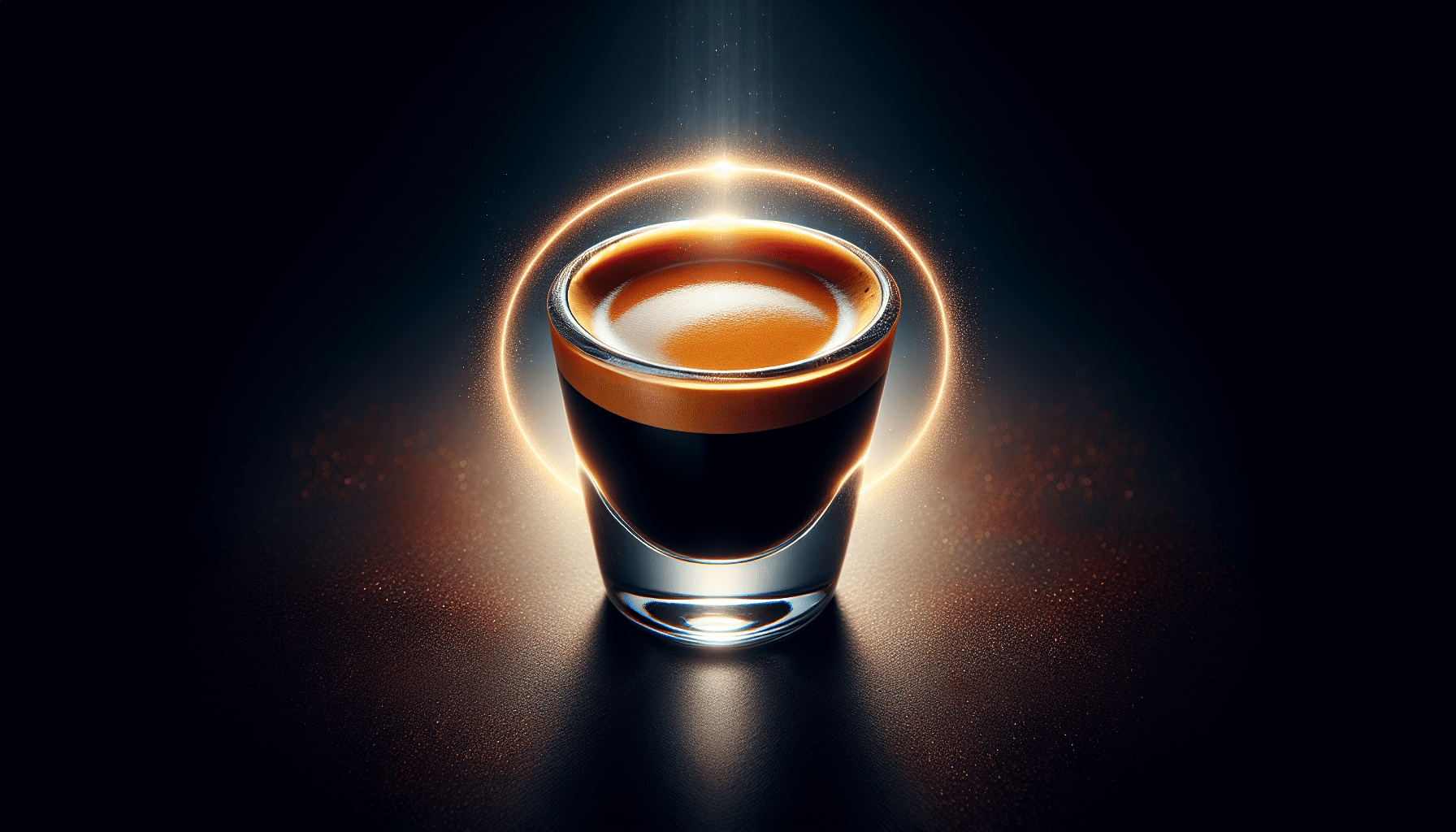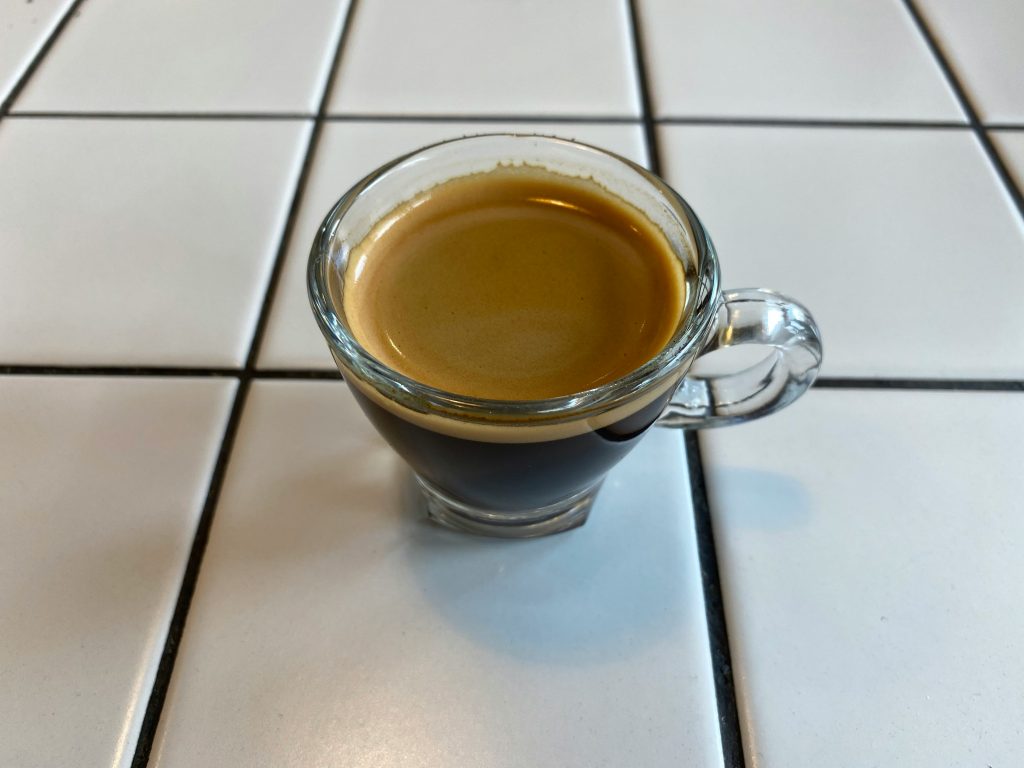How Much Is A Shot Of Espresso Caffeine?

Did you ever wonder just how much caffeine is packed into a single shot of espresso? Coffee lovers across the world rely on this strong, aromatic drink to give them their daily boost of energy. In this article, we will explore the caffeine content found in a typical shot of espresso, shedding light on just how potent this little beverage can be. So, buckle up and get ready to discover the caffeine content that lies within each tiny sip.
What is Espresso?
Definition of espresso
Espresso is a strong, concentrated coffee beverage that is loved by coffee enthusiasts around the world. It is made by forcing hot water through finely ground coffee beans using an espresso machine. Unlike regular drip coffee, which is brewed slowly, espresso is brewed quickly under high pressure, resulting in a rich and intense flavor.
Composition of espresso
Espresso is typically made using a blend of coffee beans that have been roasted to a dark and oily consistency. The beans are finely ground to ensure optimal extraction during the brewing process. A standard espresso shot is usually around 1 to 1.5 fluid ounces, providing a concentrated dose of coffee flavor.
Caffeine Content in Espresso
Factors determining caffeine content
Several factors influence the caffeine content in espresso, including the type of coffee beans used, the roast level, the brewing time, and the amount of water used. Generally, espresso contains less caffeine than a regular cup of coffee, despite its stronger taste. However, the caffeine content can vary depending on these factors.
Average caffeine content in an espresso shot
On average, a single shot of espresso contains about 63 milligrams of caffeine. However, it is worth noting that different espresso blends and serving sizes can impact the caffeine content. For example, a double shot of espresso, which is more commonly consumed, would typically contain around 126 milligrams of caffeine.
Comparison with Other Coffee Drinks
Caffeine content in different coffee drinks
Coffee drinks vary in caffeine content, depending on factors such as serving size, brewing method, and additional ingredients. Espresso typically has a higher caffeine concentration compared to other coffee drinks due to its brewing process. However, the overall caffeine content can vary depending on the specific drink and serving size.
Espresso vs. drip coffee vs. cappuccino
When comparing espresso to drip coffee, espresso generally has a higher caffeine concentration per ounce, but a smaller serving size. Drip coffee, on the other hand, has a larger serving size but a lower caffeine concentration. Cappuccino, which is made by combining equal parts espresso, steamed milk, and foam, has a similar caffeine content to a single shot of espresso.
Effects of Caffeine
Stimulant properties of caffeine
Caffeine is a natural stimulant that affects the central nervous system, increasing alertness and reducing fatigue. When consumed, caffeine blocks adenosine receptors in the brain, preventing adenosine, a neurotransmitter that promotes sleep, from binding to these receptors. This results in increased wakefulness and improved concentration.
Potential benefits and drawbacks
Moderate caffeine consumption can have several benefits, including improved cognitive function, increased metabolism, and enhanced physical performance. However, excessive caffeine intake can lead to side effects such as restlessness, anxiety, insomnia, and digestive issues. It is important to find a balance and be mindful of individual caffeine sensitivity.

Caffeine Sensitivity and Tolerance
Individual differences in caffeine sensitivity
People vary in their sensitivity to caffeine. Some individuals may be more sensitive to its stimulating effects, while others may have a higher tolerance. Factors that can influence sensitivity include age, body weight, genetics, and overall health. It is essential to listen to your body and adjust your caffeine intake accordingly.
Caffeine tolerance and dependence
Regular consumption of caffeine can lead to the development of tolerance. Over time, your body may become less responsive to the effects of caffeine, requiring larger doses to achieve the same level of stimulation. Dependence can also occur, resulting in withdrawal symptoms such as headaches and fatigue when caffeine is suddenly discontinued. It is advisable to moderate caffeine intake to avoid these issues.
Health Considerations
Caffeine and sleep
Caffeine can disrupt sleep patterns, particularly when consumed close to bedtime. It is recommended to limit caffeine intake in the late afternoon and evening to ensure a good night’s sleep. If you are particularly sensitive to caffeine, it may be beneficial to eliminate it completely in the hours leading up to bedtime.
Pregnancy and caffeine consumption
Pregnant women are often advised to limit their caffeine intake due to its potential effects on fetal development. High caffeine consumption during pregnancy has been associated with an increased risk of miscarriage, preterm birth, and low birth weight. It is best to consult with a healthcare professional regarding caffeine consumption guidelines during pregnancy.
How to Measure Caffeine Intake
Standard methods of caffeine measurement
Caffeine content can vary significantly between different brands and types of coffee. To accurately measure your caffeine intake, you can refer to the packaging labels of commercially available coffee products. Additionally, various online resources and mobile apps can provide estimates of caffeine content based on serving size and preparation method.
Estimating caffeine content in espresso
Due to its intense flavor and concentrated nature, espresso is often perceived as having high caffeine content. However, compared to a regular cup of coffee, espresso generally contains less caffeine per serving. To estimate the caffeine content in an espresso shot, it is best to refer to available data or consult with the barista who prepared the beverage.
Controversies and Myths
Common misconceptions about espresso caffeine
There are several misconceptions surrounding the caffeine content in espresso. One common belief is that dark roast espresso contains less caffeine than lighter roasts. However, the roasting process primarily affects flavor and not caffeine content. Another myth is that espresso is a completely different type of coffee bean, when in reality, it is made from the same beans used in regular coffee.
Decaffeinated vs. regular espresso
Decaffeinated espresso is an excellent option for those who want to enjoy the taste of espresso without the stimulating effects of caffeine. Decaffeinated espresso undergoes a special process that removes the majority of caffeine while preserving the flavor. It is important to note that decaffeinated espresso still contains a small amount of caffeine, although significantly less than its regular counterpart.
Alternatives to Caffeinated Espresso
Non-caffeinated coffee options
For individuals who prefer to avoid caffeine altogether, there are various non-caffeinated coffee options available. Herbal teas, decaf coffee, and caffeine-free blends are great alternatives that provide a warm and comforting beverage without the stimulating effects of caffeine. These options allow you to still enjoy a flavorful cup of coffee-like drink.
Decaffeinated espresso alternatives
If you enjoy the taste and experience of espresso but want to reduce your caffeine intake, there are decaffeinated espresso alternatives to consider. These options use decaf coffee beans to produce a similar flavor and aroma as regular espresso, providing a satisfying caffeine-free espresso experience.
Personal Preferences and Taste
Flavor profiles of espresso
Espresso is renowned for its strong and robust flavor profile. It is often described as having bold and intense notes, with hints of chocolate, caramel, and nutty undertones. However, the flavor profile of espresso can vary depending on the coffee beans used, the roast level, and the brewing technique. Exploring different espresso blends can lead to discovering your preferred flavor profile.
Balancing caffeine content and taste
Choosing espresso is not just about its caffeine content but also about your personal taste preferences. Some individuals enjoy the strong and concentrated flavor of espresso, while others may prefer milder coffee drinks. Balancing caffeine content and taste is a matter of finding the right combination that brings you satisfaction and enjoyment from your coffee experience.
